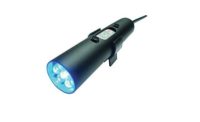Alongside scenic countryside on Route 71, about two hours southwest of Chicago, sits tiny Mark, IL, with a population of 550. There the Mennie Machine Co. operates a state-of-the-art, 225,000-square-foot metal machining facility, which employs more than 300 people and generates annual sales of more than $50 million.
Mennie precision-machines transmission and fuel-system parts and assemblies used in mission-critical applications. Customers include Caterpillar, Bosch Rexroth, Saur-Danfoss, Eaton Hydraulics, Poclain Hydraulics, Allison Transmission, American Axle and Cummins. Mennie serves customers across the United States, and also ships to Mexico, Singapore, Japan, Poland and Canada.
Throughout its nearly 45-year history, Mennie Machine has survived several economic downturns—including the major manufacturing recession from 2008 to 2010.
Unfortunately, business has softened again and is expected to stay down through 2013.
To maintain its customer base, Mennie emphasizes product quality. The company has ISO TS16949 certification, which requires continual process improvement by preventing defects and reducing variation and waste in the supply chain.
Another way Mennie improves product quality is through borescopic inspection. A borescope is an optical device that has a rigid or flexible tube with an eyepiece on one end and an objective lens on the other. The eyepiece and lens are linked together with a relay optical system. A borescope is used to inspect an area that is inaccessible by other means.
Mennie performs manual borescopic inspection on several parts to verify the removal of all burrs and debris. To inspect fuel-system parts, however, Mennie uses eight borescopes that are connected to video cameras. Each borescope-camera vision system allows on-screen viewing of live borescopic inspections, as well as the capture of video footage and still photographic images. The borescopes are made by Gradient Lens Corp., the cameras by Cognex Corp.
The systems are located in a fully automated inspection cell, which features robots that load and unload parts. Mennie designed the cell in conjunction with R.R. Floody Co. Inc., which installs factory automation and machine vision systems for industrial OEMs and other end users.
“Inspection images can be captured inside virtually any machined part,” says Kyle Goetsch, quality manager for Mennie Machine Co. “Inside one fuel-system part, for example, we capture 24 different images that are displayed and stored in a computer outside the cell. The images are then compared in a database we’ve developed (with Floody) that distinguishes good from bad parts.”
To further improve product quality, the vision system records the serial number of certain parts. Those that pass inspection go through a verification stamp station, and get moved to the outgoing robot. If a part fails, it goes into an isolation station within the workcell and gets manually inspected.
“With that serial number, we can trace the part, review the photo image captured by the borescope and find out exactly what the defect is,” says Goetsch. “Our inspector can go in and possibly rework it.
“If it can’t be fixed, then the part is put in with the nonconformed product. The last thing I ever want to hear is that a defect went out to a customer that we could have found with proper visual inspection.”
For more information on borescopes, call 800-536-0790 or visit www.gradientlens.com.
Borescopic Inspection Sharpens Company Focus on Quality
Alongside scenic countryside on Route 71, about two hours southwest of Chicago, sits tiny Mark, IL, with a population of 550.

Mennie Machine Co. uses eight borescopevideo camera vision systems to inspect fuelsystem parts. Each system allows on-screen viewing of live borescopic inspections, as well as the capture of video footage and still photographic images. Photo courtesy Gradient Lens Corp.

Mennie workers perform manual borescopic inspection on several parts to verify the removal of all burrs and debris. Photo courtesy Gradient Lens Corp.

